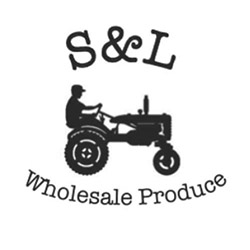2020 “Dirty Dozen” and “Clean 15” lists released
The Environmental Working Group has once again listed strawberries and spinach at the top of its annual Dirty Dozen list — along with kale, a leafy green that has gone from trendy to ubiquitous in recent years.
The EWG bases its list, which is not peer-reviewed, on annual reports from the U.S. Department of Agriculture's Pesticide Data Program.
More than than 99% of produce samples tested for that report had pesticide residues acceptable to the EPA, but EWG believes the federal standards are insufficient.
In recent years, health professionals like registered dietitians have been stepping up to defend all fruits and vegetables — organic and conventional. Even the EWG's own expert, quoted in the organization's news release, says the benefits of eating produce outweigh any risk from pesticide exposure.
Here's the full list of EWG's "Dirty Dozen" for 2019:
- Strawberries
- Spinach
- Kale
- Nectarines
- Apples
- Grapes
- Peaches
- Cherries
- Pears
- Tomatoes
- Celery
- Potatoes
EWG also mentioned hot peppers in the "Dirty Dozen" category.
Along with dietitians, members of the fresh produce industry push back against the list, especially because research has shown that disparaging certain fruits and vegetables may influence low-income consumers in particular to buy less produce overall.
“USApple’s consumer education efforts focus on science-based reasons to eat more wholesome foods like apples — not less,” U.S. Apple Association president and CEO Jim Bair said in a news release. “The Surgeon General and leading health organizations agree there is far greater health risk from not eating fruits and vegetables than from any theoretical risk that might be posed by consuming trace amounts of pesticide residues.”
For its "Clean Fifteen," EWG selected the following:
- Avocados
- Sweet corn
- Pineapples
- Sweet peas (frozen)
- Onions
- Papayas
- Eggplants
- Asparagus
- Kiwis
- Cabbage
- Cauliflower
- Cantaloupes
- Broccoli
- Mushrooms
- Honeydew
The Alliance for Food and Farming has a pesticide calculator that allows shoppers to see, based on peer-reviewed research, how many servings a child, woman or man could eat of any produce item before damage from pesticide residue could occur.
“What we try and do is really provide consumers with information that they need to know so that facts, not fears, can guide their shopping choices," said Teresa Thorne, who works with AFF. "We’re strong advocates for consumer choice, whether you choose conventional or organic produce, is great with us – just choose to eat more.
"We certainly don’t feel that it is right for a group to disparage and call perfectly safe and healthy produce ‘dirty,’ and so we take exception with that and work really diligently again to provide consumers with information on organic and conventional produce, the safety of both, the nutrition of both," Thorne said.














